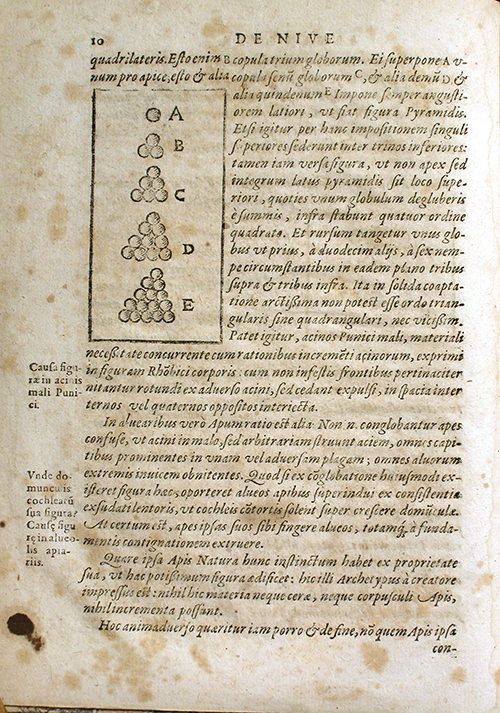- About MAA
- Membership
- MAA Publications
- Periodicals
- Blogs
- MAA Book Series
- MAA Press (an imprint of the AMS)
- MAA Notes
- MAA Reviews
- Mathematical Communication
- Information for Libraries
- Author Resources
- Advertise with MAA
- Meetings
- Competitions
- Programs
- Communities
- MAA Sections
- SIGMAA
- MAA Connect
- Students
- MAA Awards
- Awards Booklets
- Writing Awards
- Teaching Awards
- Service Awards
- Research Awards
- Lecture Awards
- Putnam Competition Individual and Team Winners
- D. E. Shaw Group AMC 8 Awards & Certificates
- Maryam Mirzakhani AMC 10 A Awards & Certificates
- Two Sigma AMC 10 B Awards & Certificates
- Jane Street AMC 12 A Awards & Certificates
- Akamai AMC 12 B Awards & Certificates
- High School Teachers
- News
You are here
Mathematical Treasure: Kepler and Sphere-packing
Johannes Kepler (1571-1630) is perhaps best remembered as an astronomer, but his curiosity extended far beyond just astronomy. Kepler was a true natural scientist and was interested in many aspects of the natural world. In 1611, he published a brief treatise, Strena seu de Nive Sexangula (New Year’s Gift concerning Six-cornered Snow), as a gift to his friends. In this work, he explored the topic of sphere-packing and related it to the six-fold symmetry of the snowflake. Kepler discovered that, in the plane, a hexagon provides the most efficient polygon for a packing or tessellation. The six-fold symmetry of the hexagon imparts a six-fold symmetry to water droplets it confines: thus the form of a snowflake.

Various configurations for sphere-packing are discussed and explored.


These images are obtained through the cooperation of the University of Oklahoma History of Science website.
Frank J. Swetz (The Pennsylvania State University), "Mathematical Treasure: Kepler and Sphere-packing," Convergence (June 2017)




